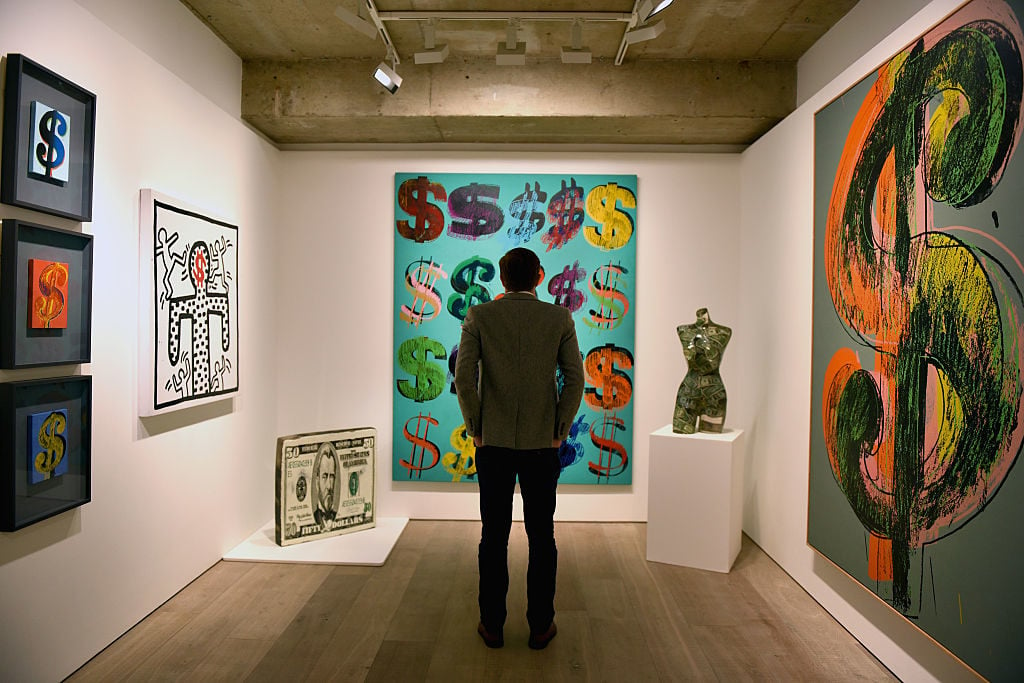Contemporary art dealers’ attempts to control the market for the artists on their rosters could fall foul of the law if challenged in the courts, leading art market lawyers claim.
Contractual terms preventing buyers from reselling works at auction for a fixed period of time—which have become increasingly popular as dealers seek to stamp out speculation that can damage young artists’ prospects—as well as agreements granting galleries the right of first refusal on resales may violate consumer rights, according to Martin Wilson, chief general counsel at the international auction house Phillips and author of Art Law and the Business of Art. Fellow lawyers in the UK and US largely agree.
Who Benefits?
Galleries justify non-resale and right-of-first-refusal clauses for a variety of reasons, Wilson explained in a recent article, including “policing the ethical duties and responsibilities of purchasers towards the artwork and the artist, the need for price transparency, a wish to maintain control over the market in the artist’s work, and the desire to ensure that the artworks are sold to buyers who appreciate rather than speculate.”
But these clauses have yet to be tested in the UK courts, and Wilson believes that, for the most part, they would fail. He argues that, in almost all cases, they seem to be “for the overwhelming and sole benefit of the seller of the artwork and, correspondingly, to the detriment of the buyer.”
Roland Foord, senior partner specializing in commercial disputes at the London law firm Stephenson Harwood, concurs. However, while Foord does not think that such contractual terms would be enforceable, he tells Artnet News that they may achieve the desired effect anyway, because “they may act as a break down the line, giving a buyer pause for thought if they think a legal challenge might arise.”
Moreover, one of the reasons that the UK courts have yet to test these arguments is that galleries employ the more effective deterrent of blacklisting clients who ignore these covenants. “It’s effectively the market’s own regulatory mechanism,” Foord says. “But any legal case that arose in the courts would have to be judged on its own merits.”

Photo by Justin Sullivan/Getty Images.
Is It Reasonable?
Where dealers sell to private buyers or collectors whose main business is not buying art, the 2015 Consumer Rights Act would apply in the UK, Wilson claims. That means that unless the selling gallery could demonstrate enough compensation to justify a restrictive covenant, it would be deemed unfair because, under the act, it would cause “a significant imbalance in the parties’ rights and obligations arising under the contract to the detriment of the consumer.”
Diana Wierbicki, head of the New York-based Withers Global Art Practice, tells Artnet News that it is not uncommon to find rights of first refusal in New York art sale contracts or in invoices issued by New York galleries. “Whether or not such restrictions are enforceable is not a black and white issue,” Wierbicki says. “Factors such as—was the restriction in writing? was it unambiguous? was it reasonable?—are all relevant.”
Wierbicki says New York courts are more likely to uphold restrictive covenants in art transactions, such as rights of first refusal and exclusive consignment rights, if they are unambiguous and in writing. New York courts will assess claims on a case-by-case basis under a common-law standard of “reasonableness.” If the contract states the buyer cannot resell for 100 years, for example, that would likely be deemed “unreasonable.” But courts have found six-month exclusive consignment rights and a first refusal right requiring a third-party buyer to meet or exceed the offer of the original seller to be reasonable.

A visitor studies Dollar Signs (1981) by Andy Warhol for “The Art of Making Money” at Sotheby’s on June 8, 2015 in London. Photo courtesy Mary Turner/Getty Images.
Preventing Competition
Trying to prevent unfair competition is one thing, but Wilson argues that many non-resale clauses actually try to prevent any competition at all. “It could be argued that they are not designed to protect any proprietary interest—but rather to prevent competition, particularly around pricing,” he says.
Even if a claim about unfair competition succeeded, though, Wilson says a gallery would have to show consequent loss, an almost impossible task as any hike in the original sale price could be interpreted as beneficial to the artist they represent, while any resale at a lower price could be attributed to the original sale being overpriced. And while the Artist’s Resale Right—a UK law that entitles artists to a royalty each time their work is resold—does impose obligations on future sales of relevant artworks, these limitations are imposed by law as opposed to a line in a contract.
For London art dealer John Martin, the legal ins and outs of these agreements over ownership are cumbersome in an art market that is already too opaque. In the right environment, he believes that most galleries would never include these kinds of resale restrictions in a contract, but would rely on knowing their clients well enough that they would offer the painting back before sending it to auction.
“From a gallery’s point of view, artists do not want to sell to speculators,” Martin says. “They want to sell to collectors who will enjoy and look after the work of art for the long term.”











